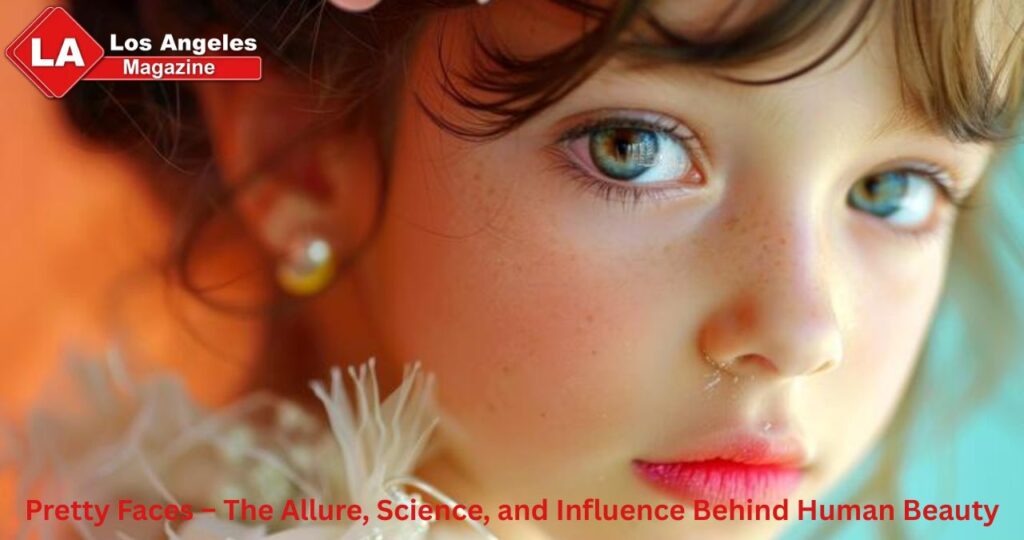From the red carpets of Hollywood to casual social media selfies, “pretty faces” have always been a captivating subject in human culture. Beauty has the power to inspire, influence, and even define trends, but it is more than just skin deep. The concept of what makes a face “pretty” is shaped by science, culture, history, and individual perception.
In this article, we explore the psychology, biology, and societal influences that make pretty faces so fascinating, along with their impact on fashion, media, and self-esteem.
What Defines a Pretty Face?
At its core, a “pretty face” is often associated with visual harmony. Researchers in psychology and evolutionary biology suggest that certain facial features are universally perceived as attractive due to symmetry and proportion. Some common traits that people associate with pretty faces include:
- Clear, healthy skin
- Balanced facial proportions
- Bright, expressive eyes
- Symmetrical features
- Youthful appearance
However, beauty is not strictly universal. Cultural preferences can shift dramatically — a feature considered beautiful in one society may not hold the same appeal in another.
The Science Behind Facial Attractiveness
Science reveals that pretty faces often share some common traits linked to evolutionary preferences. Studies show that facial symmetry is a significant factor because it’s subconsciously associated with health and good genetics. Additionally:
- Golden Ratio: The mathematical principle often used in art and architecture also applies to human faces. The closer facial proportions are to the “golden ratio,” the more likely people are to perceive them as pretty.
- Averageness: Surprisingly, faces that represent the average of a population’s features are often considered more attractive than highly unusual ones.
- Youthful Indicators: Fuller lips, smooth skin, and bright eyes tend to signal youth, which in evolutionary terms was associated with fertility and vitality.
Cultural Influence on Pretty Faces
While biology plays a role, culture heavily influences what we see as pretty. For example:
- In East Asia, fair skin and delicate facial features are often considered ideal.
- In Western cultures, high cheekbones and a defined jawline might be more celebrated.
- In some African regions, fuller facial features and radiant dark skin tones are considered highly attractive.
- In South Asia, expressive eyes and long hair have historically been associated with feminine beauty.
Over time, globalization and social media have blurred these cultural boundaries, leading to a fusion of beauty standards across the world.
The Role of Pretty Faces in Media and Marketing
Pretty faces are powerful marketing tools. Brands know that consumers are naturally drawn to attractive visuals, so they use models, actors, and influencers with appealing features to create stronger emotional connections with audiences.
From skincare ads showcasing flawless complexions to movie posters with charismatic lead actors, the presence of pretty faces can:
- Capture attention instantly
- Increase brand recall
- Enhance emotional engagement
- Drive higher sales and social shares
This is why the entertainment and fashion industries often set beauty trends that ripple across the globe.
Pretty Faces and Social Media
In the age of Instagram, TikTok, and YouTube, pretty faces dominate timelines. Influencers who fit certain beauty ideals often attract larger followings, leading to sponsorships and brand deals. This constant exposure has both positive and negative effects:
- Positive: Inspires people to take better care of their skin, health, and style.
- Negative: Creates unrealistic beauty expectations, leading to self-esteem issues and pressure to use filters or undergo cosmetic procedures.
Apps with beauty filters have made it easy for anyone to enhance their facial features instantly, blurring the line between natural beauty and digital perfection.
Beyond the Surface – Personality and Charm
While physical beauty can draw attention, personality and character determine lasting impact. Many people recall someone’s kindness, humor, or confidence far longer than their facial symmetry. Charisma, emotional intelligence, and authenticity can elevate someone’s attractiveness beyond what is visible.
A pretty face may open doors, but it’s the person behind it that leaves a lasting impression.
The Psychology of Attraction
Psychologists say that attraction to pretty faces is partly instinctive. Our brains process attractive faces faster and associate them with positive traits — a phenomenon known as the halo effect. This means that individuals with pretty faces are often (sometimes unfairly) assumed to be more intelligent, trustworthy, or capable.
However, it’s important to note that attraction is highly subjective. Emotional connection, shared values, and mutual respect often outweigh looks in long-term relationships.
The Impact on Self-Esteem
The constant comparison to idealized pretty faces can affect self-esteem, especially in young people. Exposure to edited images and influencer culture can lead to:
- Body dysmorphia
- Unhealthy beauty practices
- Cosmetic surgery pressure
- Anxiety about appearance
On the flip side, embracing one’s own unique features and redefining what “pretty” means on a personal level can be empowering.
Diversity and Changing Beauty Standards
In recent years, there has been a significant push toward diversity in media. Representation of different skin tones, facial structures, and body types has challenged the narrow definition of pretty faces. The fashion industry now features models with:
- Freckles
- Natural hair textures
- Plus-size figures
- Visible skin conditions
This broader representation sends the message that beauty is not one-size-fits-all.
Tips for Enhancing Your Natural Beauty
You don’t need to fit a strict mold to feel attractive. Here are ways to bring out your best features naturally:
- Skincare – Healthy, glowing skin can enhance any face.
- Hydration – Drinking enough water keeps skin fresh.
- Healthy Diet – Nutrient-rich foods can improve complexion and overall appearance.
- Grooming – Well-kept eyebrows, hair, and personal style make a difference.
- Confidence – Wear your unique look proudly — confidence itself is magnetic.
Final Thoughts
Pretty faces have fascinated humanity for centuries, influencing art, culture, and social interactions. While science and society may set certain standards, beauty remains deeply personal and subjective. A face can be considered pretty not just for its symmetry or smooth skin, but for the emotions, warmth, and stories it carries.
In a world filled with diverse faces, the true definition of beauty lies in individuality. Whether your features match global beauty trends or stand out in their own way, your uniqueness is what truly makes you beautiful.



